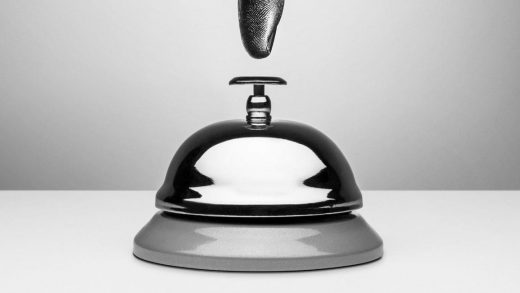Researchers emailed 6,000 hotels and found widespread preference for names that sounded white
Spring has sprung, masks are coming off, and house-bound travelers are getting ready to book vacations. However, hotels that want to produce a good customer service for everyone should do a thorough examination of their customer service protocols to check for racial bias. Preliminary results from new studies by professors Alexandra Feldberg of Harvard Business School and Tami Kim of University of Virginia Darden School of Business show that hotel concierges offer better service to white customers than Black and Asian customers.
In a series of three studied conducted between 2016 and 2020, Feldberg and Kim emailed concierges from nearly 6,000 hotels asking for restaurant recommendations. They used different names to suggest gender and race (ex: Brad Anderson, LaToya Washington, and Mei Chen) and in some cases included educational credentials such as MD or PhD. Feldberg and Kim found that hotel concierges responded to 43% of emails from “white” names, 40% from “Black” names, and 36% from “Asian” names.
However, what the researchers didn’t expect was there was also a difference in the quality of the emails the customers received. This included factors such as how much information was in the email, as well as how often the concierge tried to pass the customer to someone else.
“There should have been no difference in information like the number of restaurants that workers recommended—but . . . our results show that emails sent from Mei Chen actually received responses sharing fewer restaurants than emails sent from Brad Andersen,” Feldberg commented in an email to Fast Company.
Moreover, Feldberg and Kim also found that customers with “white” names received emails with a personalized greeting that addressed them by name 74% of the time, compared to 61% of customers with “Black” names and 57% of customers with Asian names.
“If hotel managers were only checking response rates, they wouldn’t see any differences in how their service representatives respond to people’s emails,” Kim told Harvard Business School. “Then they might think, ‘Oh, my service representatives are doing great. There’s nothing to improve here.’ But what our results are showing is that we need to go beyond that because, even if they are responding to everyone, it doesn’t mean that everyone is getting treated equally.”
It doesn’t have to be this way
Feldberg and Kim recommend a three-pronged strategy to address this problem. First, send surveys to customers from a variety of backgrounds to gauge the quality of customer service. They also recommend analyzing existing data from how front-line workers treat customers ranging from how employees greet customers to how perks such as room upgrades are distributed.
Finally, they also recommend running experiments such as the one they conducted to understand how employees treat customers from different backgrounds. “Before you do anything, you first need to diagnose the problem,” Feldberg said over an email. “We often see that companies haven’t done this even though they are likely to have many the tools they need at their disposal. ??
For instance, Feldberg says, “chances are that organizations are already collecting massive amounts of data in all different parts of their businesses . . . but these parts might not be communicating . . . Linking across the databases companies already have . . . can illuminate what’s happening at the frontlines and potential blind spots.”
Kim warned that companies that don’t fix their racial bias risk seeing drops in their customer satisfaction scores, their customer retention, and their reputations. In this day and age where online reviews are highly visible, news of poor treatment can spread quickly.
“Identifying potential blind spots and coming up with interventions to address them can oftentimes be low-cost,” Kim told Fast Company in an email. However, she warned, “the costs of a scandal can be massive—including potential lawsuits, negative brand equity, and consumer boycotts amplified by social media.”
(31)



